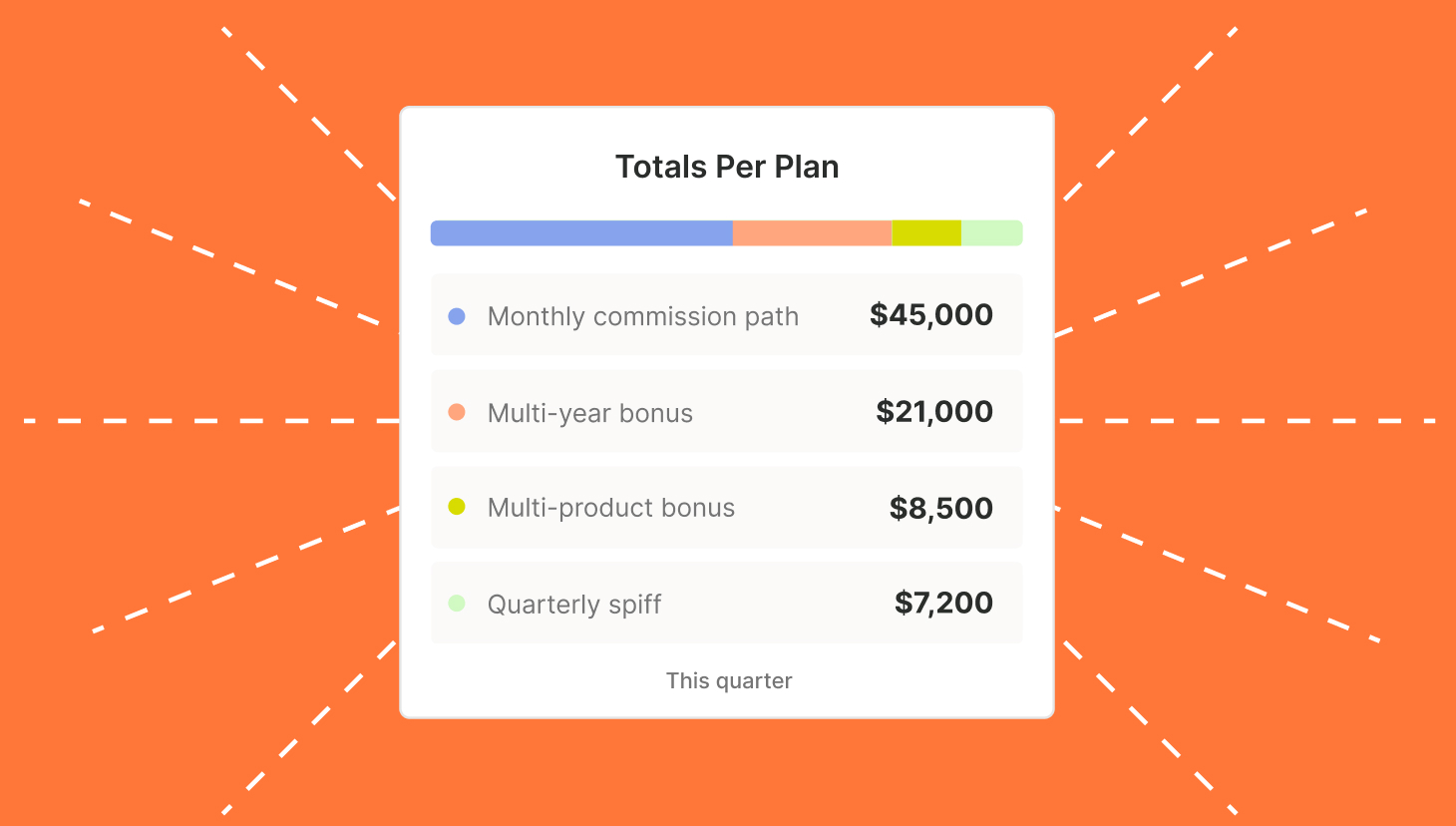Revenue operations, commonly known as RevOps, is more important in today’s market than ever before.
As buyers have shifted buying behaviors to conduct their own research and trial a product before even speaking to sales, companies have had to adjust. And one of the bigger adjustments over the years has been the rise of RevOps.
What does a RevOps person do? RevOps aligns the entire revenue team by delivering data and visibility into a business’s more important metrics and processes. Then, they leverage their findings to improve efficiencies and drive revenue predictability according to Clari. In fact, SaaS companies with RevOps practices have reported the following increases in productivity and outcomes:
- 100% to 200% increases in digital marketing ROI
- 10% to 20% increases in sales productivity
- 10% increase in lead acceptance
- 15% to 20% increases in internal customer satisfaction
- 30% reductions in GTM expenses
So, it’s understandable that RevOps has rapidly risen in popularity. For example, job opportunities for RevOps-related job titles increased by 300% over the past 18 months.
Plus, 41% of surveyed companies in Revenue.io’s recent study reported having an in-house RevOps function, a stat that’s up 15% since 2021. Another 11% of companies said they plan to introduce RevOps in 2023.
Try QuotaPath for free
Try the most collaborative solution to manage, track and payout variable compensation. Calculate commissions and pay your team accurately, and on time.
Start TrialWhen is it time to add RevOps?
Not sure if your company is ready to jump on the RevOps bandwagon? Here are some indicators that it’s time to launch your RevOps practice:
- You have a goal to drive transparency and accountability at scale across your organization.
- Your revenue targets across Sales, Marketing, and Customer Success aren’t aligned.
- Key business metrics across departments don’t match up.
- You’re experiencing continuous internal strife and conflict leading to finger-pointing and mistrust.
If that sounds like your organization, read on for best practices in developing your RevOps foundation, scaling your practice, and learning from some of the best SaaS companies that adopted RevOps early on.
Building a foundation for RevOps
Every successful RevOps function shares three key elements in common. These include assembling a cross-functional team, setting RevOps metrics to measure success, and establishing repeatable processes.
Let’s take a look at each of these.
Assembling a cross-functional team
RevOps is about creating alignment across your customer-facing departments like Sales, Marketing, Customer Service, Renewals, and Product.
When these teams are well aligned:
- Sales can easily recognize the right customers for your products
- Marketing can attract and retain the right customers
- Customer experience is excellent
- Operations can put the right tools, systems, and resources in place
When strongly aligned, you’ll see shared goals and objectives and consistent cross-functional communication and collaboration on go-to-market efforts.
Setting RevOps metrics
Once you’ve aligned your customer-facing teams, you’re ready to begin tracking metrics that are essential to your success. This enables you to have better visibility into your RevOps performance, identify potential issues, and give you time to adjust accordingly.
Commonly adoptedRevOps metrics your team should track include:
- Revenue: Measuring revenue looks different based on the business type. In SaaS, we typically track monthly or annual recurring revenue (ARR).
- Revenue retention: Gross revenue retention and net revenue retention have started to replace ARR as the most important metrics in 2023 when predictable revenue trumps “grow at all costs.” Measuring revenue retention provides insights into the success of Sales and Marketing processes such as whether you’re:
- Targeting the right customers
- Pitching the right way
- Onboarding new customers effectively
- Providing sufficient support to customers experiencing problems
- Customer acquisition cost (CAC): Ensure your CAC aligns with the customer lifetime value (CLV) of your product. For example, you wouldn’t spend $100 to acquire a customer with a CLV of only $20.
- Sales pipeline velocity: This metric tells you the average time from lead to paying customer. However, pipeline velocity is not measured in time but in revenue. You can calculate sales pipeline velocity by multiplying the number of sales-qualified leads (SQLs) in your pipeline by the average deal size. Then multiply that by the overall win rate expressed as a percentage and divide by the length of the sales cycle. High pipeline velocity is an indicator of close alignment between your sales and marketing teams.
- Customer churn rate: This is the percentage of customers who stop paying for your product in a designated amount of time. This is often an indicator of how well customer support is performing. Average churn rates vary from 4.75% to 7.55% depending on the industry, according to Recurly.
- Sales forecasting: Define how much individual sales reps and your entire sales function will sell in a designated time period. This is often monthly, quarterly, or annually. Historically sales created relatively unreliable forecasts that ignored critical factors like marketing spend, customer lifetime value, and customer churn rate. So, it’s best that your RevOps team create these forecasts, track progress against them, and adjust accordingly.
- Renewals, upgrades, and cross-sells: the more renewals, upgrades, and cross-sells you attain, the greater your customer lifetime value will be. This translates to a better budget for customer acquisition to help you hit your growth goals.
- Conversion rate: this is the percentage of leads who advance through the sales process and become paying customers. This figure alone doesn’t tell you much but it is a valuable indicator of the effectiveness of your sales and marketing efforts.
Recommended Reading: Who Should RevOps Report To?
Establishing processes
RevOps is tasked with removing silos between departments, especially Sales, Marketing, and Customer Service to create a cohesive customer journey.
As silos are removed, inter-departmental processes throughout the revenue cycle need to be established to streamline operations and provide transparency. These might include how to hand off leads between Marketing and Sales or how to prioritize customer support requests.
Create Compensation Plans with confidence
RevOps, sales leaders, and finance teams use our free tool to ensure reps’ on-target earnings and quotas line up with industry standards. Customize plans with accelerators, bonuses, and more, by adjusting 9 variables.
Build a Comp PlanScaling your RevOps practice
Whether you’ve yet to start your RevOps journey or you currently have a team of one, let’s look at how to scale your RevOps practice.
How do you structure a RevOps team?
RevOps is intended to unify all revenue-generating operations. It encompasses four main functions:
- Operations experts: Leads high-level strategy and makes sure GTM teams have what they need to function efficiently. This includes tools insights, processes, and content.
- Enablement specialist: Responsible for training GTM teams on things like proper messaging about current and new product features and relevant use cases.
- Data analysts: Review and translate data to understand revenue performance and how to improve it.
- Tools management technical owners: Manages all software and technical tools. These team members make decisions about tools, train GTM teams on their use, and oversee APIs and integrations to ensure they are functioning properly.
Many organizations start with only one RevOps person, typically at the director level, who oversees these functions. Then, as the business scales, they begin to grow their Revops team.
To expand your RevOps team, start by looking at your internal staff to identify current team members you can shift into these functions. Then, fill in the gaps by hiring additional staff as needed.
Key RevOps roles for your organization include:
Chief Revenue Officer or Head of RevOps: Typically reports to the CEO and works collaboratively with heads of sales, marketing, and customer success. This role oversees the unified strategy of the revenue business.
Sales enablement manager: Arms sales with the knowledge, content, and training needed to effectively advance sales through the pipeline to a successful close.
Systems administrator: Responsible for knowing all the ins and outs of the tech stack, managing integrations, developing new processes, and migrating data as needed.
Business analyst or sales analyst: A data analyst who understands and tracks RevOps metrics. This role knows how to leverage insights from metrics to identify ways to improve the efficiency and productivity of revenue teams.
Fractional hiring is also a possible solution if you don’t have the budget or a long-term requirement for a role. It prevents you from hiring someone short-term only to turn around and lay them off. Plus, it saves time by enabling you to add someone quickly who can hit the ground running without a long onboarding period.
Investing in technology and automation to streamline processes
Once you have established product-market-fit and go-to-market processes, it’s time to build your RevOps tech stack.
As your company grows, your tech stack should evolve accordingly. Here’s an overview of the progression from the seed stage through series C funding:
Seed stage: At this point, you are likely closing your first 10 customers and only need the basics like CRM, proposal software, automations, a payment platform, and accounting software.
Series A: Acquisition of new business while scaling existing customers is your focus here. So, potential additions to your tech stack include platforms for sales engagement, a data provider, a customer success platform, commission tracking, quote configuration, and an eSign platform for contracts.
Series B: As your sales team expands, your focus is on standardizing processes as you grow your team. You may also be approaching more enterprise prospects, creating the need to configure more complex deals. Potential additions to your tech stack at this point include sales intelligence and upgrades to some of your prior technology selections.
Series C: By now your sales team likely consists of more than 30 team members divided between new business and current customer expansion. This is where you need to focus on a stack that helps you ensure standardization while being flexible enough for upsells and various renewal situations. Again, this is where you start upgrading some of your prior technology selections to meet your requirements as you scale.
We also found a great tech stack cheat sheet that gives you more details of potential technology to meet your needs.
Developing a culture of continuous improvement and learning
RevOps success requires a culture of continuous learning, adaptation, and improvements. In practice, this takes shape by constantly tracking and analyzing data to identify ways to improve revenue operations performance. In doing so, you’ll be able to diagnose weaknesses and improve outcomes that allow you to keep pace as market conditions change.
Streamline commissions for your RevOps, Finance, and Sales teams
Design, track, and manage variable incentives with QuotaPath. Give your RevOps, finance, and sales teams transparency into sales compensation.
Talk to SalesCompanies with successful RevOps practices
Who can you look to in the industry as a RevOps best practices example company? We sourced a few below, including us!
At QuotaPath, we have leveraged RevOps to accelerate growth. It started when our CEO, AJ Bruno, hired Ryan Milligan for the RevOps role. At the time, we had 40 employees. Ryan started as a SalesOps leader with a MarketingOps and SEO background but quickly shifted to a more centralized RevOps role.
The combination of SalesOps and analytics allowed the company to implement RevOps easily.
According to Ryan, “The numbers are the numbers. We can’t change those numbers unless we start to think about the activities that drive the objectives, the results, and change those.”
AJ and Ryan conduct business reviews weekly where they assess the funnel from top to bottom. Ryan records information about the metrics and shares them with first-line managers so they can come to the meeting prepared with questions and ideas for continuous improvement.
Finding the right stack of tools and RevOps allows us to ensure we’re getting the most out of what we are using or make adjustments accordingly.
AJ said RevOps has been a key ingredient to QuotaPath’s growth.
Carbon Black, a cybersecurity company, began its RevOps journey to accelerate growth during a transition from an on-premise to a cloud business model. According to Daniel Carpenter, their RevOps leader, Carbon Black leveraged data science for RevOps success. It helped them drive productivity improvements for lead and account prioritization to facilitate prospecting and support Customer Success and renewals with predictive churn insights.
Carbon Black leaders have said they were glad to centralize their go-to-market operations functions under one leader. Although a challenge to finalize, the results in doing so have facilitated better process optimizations across RevOps.
They also said that the enablement team played a critical role in driving the transformation from cloud-selling motions that their sales team and partners needed to learn.
Overall, Carbon Black believes their RevOps team was essential to meeting both its growth objectives and its speed of transformation during that transition.
Okta was an early adopter of the RevOps model, too. Jake Randall started out in finance at the company’s inception. As the company started to grow, it embraced the RevOps approach even though it was yet to become popular.
Jake told Demand Gen Report, “A RevOps structure ensures you have a common understanding and agreement across the entire company for your go-to-market strategy, execution, and measurement to better drive growth.”
When Okta was a startup of around 50 people, they looked to optimize the entire buyer’s journey. This would enable them to grow as efficiently as possible.
As they built out their unified operations team, they made sure all operations roles had functional alignment with their business units to support them effectively. But the operations team was also a standalone function and team.
Jake summed things up by saying, “For Okta, RevOps is simply how we do business. And it’s the foundation from which a small startup became a $500M+ public company that is now delivering 50+% year-over-year revenue growth!”
Time to grow your RevOps practice
There’s no doubt that RevOps is essential to consistent revenue growth, efficient operations, and superior customer experience. Whether your RevOps journey is yet to start or you have a team of one, now you have a guide to help you scale.
Build a firm RevOps foundation by assembling your cross-functional team. Select essential RevOps metrics to track. And, establish processes to keep your organization on track.
If starting from scratch, establish the role of RevOps by identifying or hiring one person who can fulfill the four main functions of RevOps. If you’re looking to expand your team, look internally first before adding to your headcount.
Remember to select purpose-driven technology tools to meet your needs. Tracking and analyzing metrics is essential to your RevOps practice success. As is a culture of continuous improvement and learning.
About QuotaPath
QuotaPath supports RevOps, Sales, and Finance professionals by simplifying the process of sales compensation. From comp plan design through sales commission payments, QuotaPath partners with growth-stage companies to align teams over earnings and attainment visibility. To learn more, chat with our team or try QuotaPath for yourself with a free 30-day trial.



